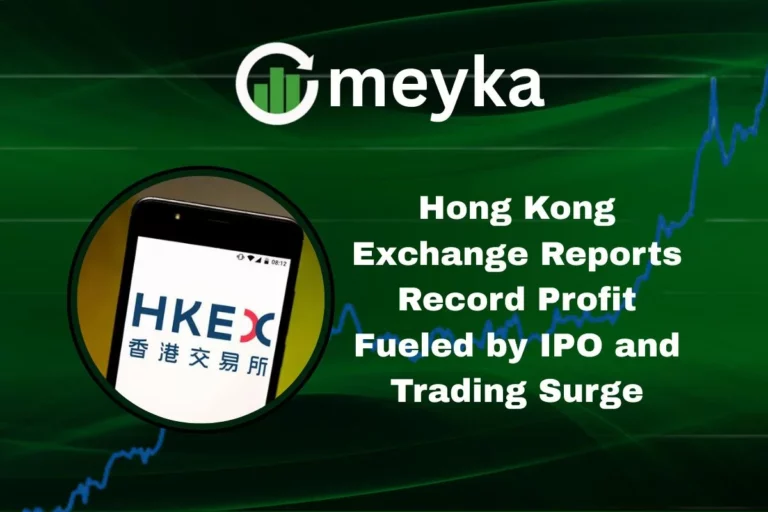Volvo Cars Q3 Profit Edges Higher Despite Pricing Pressures and Tariffs
In a challenging global automotive market, Volvo Cars Q3 delivered a modest yet meaningful gain for the third quarter. The company reported an adjusted operating profit of SEK 5.9 billion (about USD 627 million), up from SEK 5.8 billion a year earlier, despite falling sales, intense pricing pressure, and soaring import tariffs.
Q3 Highlights for Volvo Cars
- Revenue and volumes were under pressure: Volvo Cars reported a roughly 7% drop in sales in Q3 2025 compared with the same period last year.
- Despite that, the margin improved sharply: the gross margin rose to 24.4% from 17.7% in the previous quarter.
- The company’s cost-cutting initiative played a major role, including job cuts amounting to about 3,000 positions and reduced investment, helping offset external headwinds.
- One significant challenge comes from trade: Volvo Cars is particularly exposed to U.S. import tariffs because many of its vehicles destined for the U.S. are produced in Europe, making its cost base higher.
- Management noted that recent trade relief (such as a reduction of U.S. tariffs on European cars from 27.5 % to 15 %) offers some headwind relief.
Drivers Behind the Improved Profit
Cost Cuts and Operational Discipline
The company’s turnaround is rooted in aggressive cost management. Under the leadership of CEO Håkan Samuelsson (who returned earlier in 2025), Volvo Cars tightened operations, streamlined its supply chain via parent company Geely Holding, and pulled back on heavy investment focus in the near term. This has paid off in improved margins.
Product & Margin Mix
While volumes fell, the focus on higher‐margin models and improved pricing (where possible) contributed. For example, refreshed versions of the best‐selling XC60 helped bolster margin improvement.
Trade Relief Impact
Tariff burdens remain, but a trade deal between the EU and the U.S. reduced some duties on European-built cars. Volvo Cars benefits from that, though it remains cautious about its remaining exposure.
Key Challenges to Watch
Tariffs & Global Trade Rules
Volvo Cars remains vulnerable to trade policy shifts. With U.S. import tariffs affecting its cost structure (especially vehicles built in Europe for the U.S.), any reversal or disruption could hurt profitability further.
Pricing Pressure & Market Weakness
The automotive market is facing weak global demand, increased competition (especially from electric vehicle players), and supply‐chain cost inflation. Lower volumes (-7% in Q3) emphasize this risk.
Electrification & Investment Needs
While Volvo Cars has committed to electrification and higher technology content, the cost of such transitions is steep. The firm must balance cutting costs now, while still investing in future technology to stay competitive.
Visibility & Forecasting
The company withdrew forward earnings guidance earlier this year, making it more difficult for external analysts and those doing stock research to assess future performance.
Why This Matters for Investors and Market Observers
Although Volvo Cars is not listed as a pure public company, its performance sends signals for the broader auto sector and for investors considering automotive exposure within the stock market. Here are some key takeaways:
- Margin over volume: Volvo’s Q3 result highlights that in weak demand environments, profitability will depend more on margins, cost discipline, and product mix than sheer volume growth.
- Trade policy risk matters: For global automakers, tariffs and trade flows are real profit levers, not just operational issues. Those doing stock research on similar companies (or even the broader manufacturing sector) should factor in trade exposure.
- Supply‐chain and restructuring payoff: The sharp margin jump indicates that restructuring efforts (job cuts, investment slowdown, better sourcing) are effective and this can boost investor confidence.
- Electric vehicle transition cost: As automakers shift toward EVs, companies like Volvo must juggle heavy investment with current profitability. Investors in “AI stocks” or tech‐driven mobility firms should note how legacy automakers are navigating this shift.
- Comparable firms: Looking at Volvo Cars’ experience may offer lessons for other auto companies under pressure, especially with respect to the U.S./EU tariffs and cost structure changes.
What to Monitor Going Forward
For analysts and market watchers, here are key metrics and indicators to track for Volvo Cars and comparable automakers:
- Operating margin trends – Can Volvo sustain or improve on its 24.4 % gross margin?
- Sales volume direction – Will the drop in volume reverse or stabilise?
- Tariff structure developments – Any further reductions or changes in the U.S./EU trade rules matter.
- Electric vehicle (EV) and hybrid model roll-outs – Success in new models will be crucial for future growth.
- Cost‐cutting and investment programs – Whether restructuring yields ongoing benefits or whether investment drag occurs.
- Cash flow and capital expenditure (CapEx) – Given heavy investment needs, how cash generation trends affect strategic flexibility.
Conclusion
Volvo Cars Q3 provided a cautiously positive result: despite challenging conditions, weak volumes, pricing pressures, and tariffs, the company edged towards higher profitability through disciplined execution.
For industry watchers, this result reinforces that profitability in automotive now depends heavily on cost structure, margin optimisation, and trade policy navigation, not just increasing sales. For those engaged in stock market analysis or stock research, Volvo’s turnaround offers a case study in managing macro risks while still investing in a disruptive technology future (such as EVs and mobility services).
As we move ahead in 2026 and beyond, what will matter most is whether this margin improvement can hold, whether tariffs or trade conditions worsen or improve, and how successfully Volvo Cars can transition its business into the electric and tech era without sacrificing profitability.
FAQs
The key drivers were cost‐cuts (including 3,000 jobs), a sharper focus on higher-margin models and improved supply-chain cooperation with its parent Geely, which helped lift its gross margin to 24.4%.
Quite significant, Volvo Cars exports many vehicles from Europe to the U.S., and U.S. tariffs greatly increase its cost base. While recent relief (tariff drop from 27.5% to 15%) helps, it remains a vulnerability.
Yes, Volvo Cars’ results suggest that in a subdued market, automakers must emphasise margin, cost control and product mix rather than rely purely on volume growth. This is a valuable lesson for the broader auto sector and related stock market investments.
Disclaimer:
The content shared by Meyka AI PTY LTD is solely for research and informational purposes. Meyka is not a financial advisory service, and the information provided should not be considered investment or trading advice.






